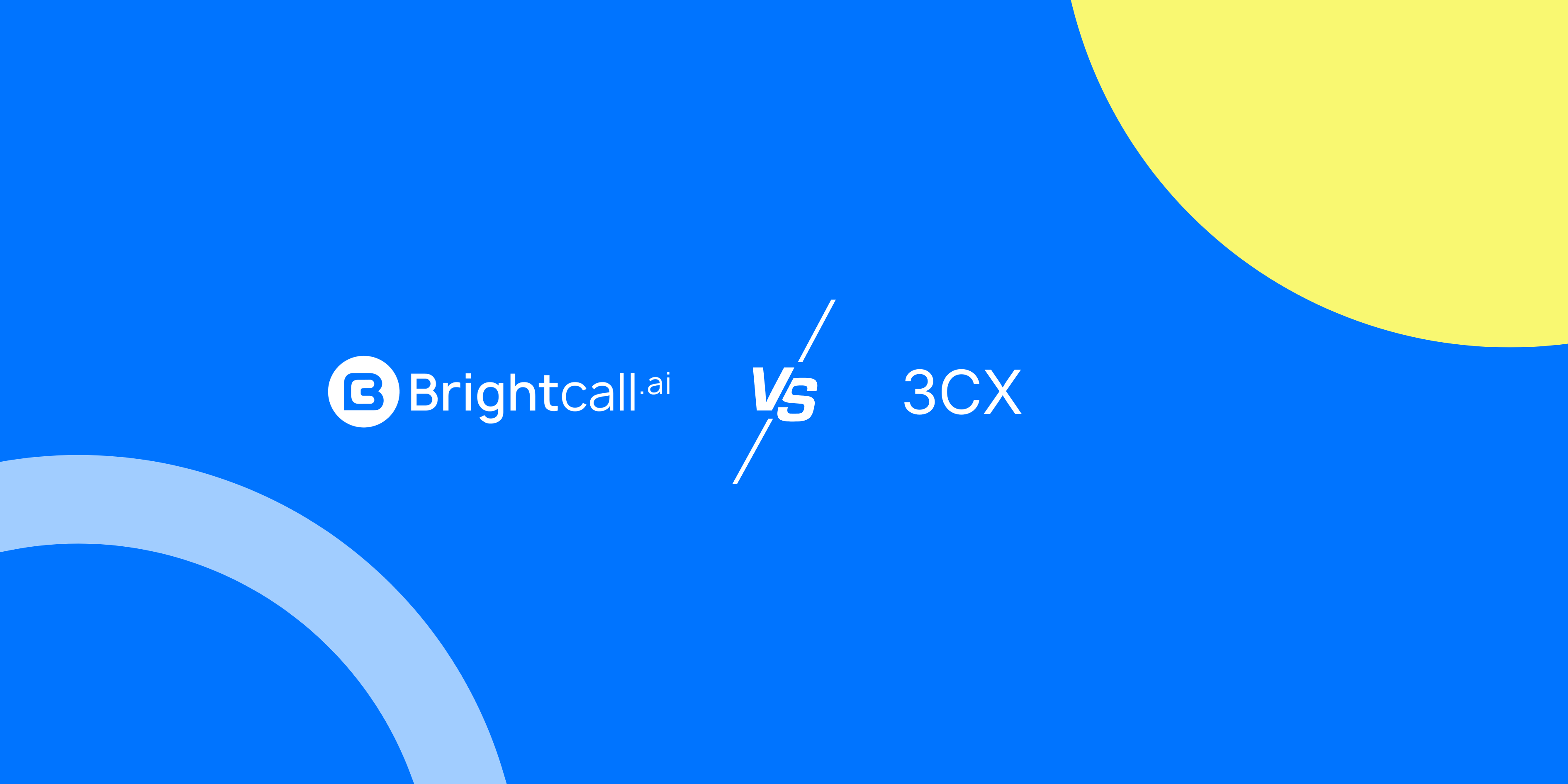






Table of Content:
Outdated Dialer: What You Need to Know

In today's fast-paced world, communication plays a crucial role in the success of businesses and organizations. One of the key tools used for communication is a dialer. However, not all dialers are created equal. In this article, we will explore the concept of dialers, specifically focusing on outdated dialers. We will discuss their characteristics, potential issues, and the impact of using such a system.
Furthermore, we will delve into modern dialer solutions and how businesses can successfully transition from an outdated dialer to a more efficient and secure system.
Understanding Dialers
A dialer, in its simplest form, is a software or hardware device that automates the process of dialing phone numbers. It is commonly used in call centers, sales organizations, and customer service departments. The primary purpose of a dialer is to increase operational efficiency by automating manual dialing tasks, allowing agents to make more calls in less time.
But what exactly is the role of a dialer in communication? Let's delve deeper into this topic.
The Role of a Dialer in Communication
A dialer plays a vital role in enabling communication between businesses and their customers. By automatically dialing phone numbers, it saves time for agents, ensuring they can focus on meaningful conversations rather than wasting time on manual dialing.
But that's not all. Dialers also offer various features and functionalities that enhance the overall communication process. For example, they can integrate with customer relationship management (CRM) systems, allowing agents to access customer information and history during calls. This enables personalized interactions and improves customer satisfaction.
Furthermore, dialers can be programmed to follow specific call scripts, ensuring consistency in communication and adherence to compliance regulations. They can also record calls for quality assurance purposes, allowing supervisors to review and provide feedback to agents for continuous improvement.
Evolution of Dialers Over the Years
Dialers have come a long way since their inception. From the early days of manual dialing, advancements in technology have brought about various types of dialers, such as predictive dialers, progressive dialers, and preview dialers. These modern dialers leverage algorithms and artificial intelligence to optimize call rates, improve agent productivity, and enhance the customer experience.
Predictive dialers, for instance, use statistical algorithms to predict agent availability and call abandonment rates. By dialing multiple numbers simultaneously and connecting agents to live calls only, predictive dialers minimize idle time and maximize agent productivity.
Progressive dialers, on the other hand, dial one number at a time as agents become available. This ensures a more controlled approach, allowing agents to handle each call without feeling overwhelmed.
Preview dialers provide agents with customer information and call details before dialing. This allows agents to prepare for the call, ensuring a more personalized and effective conversation.
As technology continues to advance, dialers are expected to evolve further, incorporating more sophisticated features and capabilities. The future of dialers may involve integration with artificial intelligence-powered chatbots, voice recognition technology, and seamless omnichannel communication.
In conclusion, dialers have revolutionized the way businesses communicate with their customers. By automating the dialing process and offering various features, dialers enhance operational efficiency, improve agent productivity, and ultimately, deliver a better customer experience.
Identifying an Outdated Dialer
While dialers have evolved significantly, there are still many outdated systems in use today. It is important for businesses to be able to identify whether they are using an outdated dialer or not.
Common Characteristics of Outdated Dialers
Outdated dialers often exhibit several common characteristics that hinder their effectiveness. These may include slow dialing speeds, limited integration capabilities with other systems, and a lack of advanced features such as call recording or automated voicemail drops. Additionally, outdated dialers may lack the ability to adapt to changing compliance regulations, putting businesses at risk of non-compliance.
Slow dialing speeds can significantly impact a business's productivity. When agents have to wait for the dialer to connect calls, it leads to wasted time and decreased efficiency. This can result in missed opportunities and reduced revenue. In today's fast-paced business environment, where every second counts, having a dialer that operates at optimal speed is crucial.
Integration capabilities are also essential for businesses that rely on multiple systems to manage their operations. Outdated dialers often lack the ability to seamlessly integrate with other software or customer relationship management (CRM) systems. This can lead to manual data entry, duplication of efforts, and a disjointed workflow. In contrast, modern dialers offer robust integration capabilities, allowing businesses to streamline their processes and improve overall efficiency.
Furthermore, the absence of advanced features like call recording or automated voicemail drops can hinder a business's ability to provide quality customer service. Call recording enables supervisors to monitor agent performance, identify areas for improvement, and ensure compliance with industry regulations. Automated voicemail drops, on the other hand, save agents time by leaving pre-recorded messages when a call goes to voicemail. These features not only enhance productivity but also contribute to a better customer experience.
Compliance regulations are constantly evolving, and businesses must ensure that their dialers can adapt to these changes. Outdated dialers may lack the necessary updates and functionalities to comply with industry regulations, putting businesses at risk of non-compliance penalties. Staying up-to-date with compliance requirements is crucial to maintain a positive reputation and avoid legal issues.
Potential Issues with Using an Outdated Dialer
Using an outdated dialer can have several negative consequences for businesses. Firstly, low dialing speeds and inefficient call routing can result in decreased efficiency and productivity. Agents may spend a significant amount of their time waiting for calls to connect, resulting in wasted resources.
Moreover, outdated dialers may not meet the necessary security standards, making businesses vulnerable to data breaches and exposing sensitive customer information. This can have severe financial and reputational consequences. In today's data-driven world, where privacy and security are paramount, businesses must prioritize the use of modern dialers that adhere to the highest security standards.
Additionally, outdated dialers may lack the scalability required to support a growing business. As companies expand their operations, they need a dialer that can handle increased call volumes and adapt to changing business needs. Outdated dialers may struggle to keep up with the demands of a growing business, leading to dropped calls, system crashes, and frustrated customers.
In conclusion, identifying an outdated dialer is crucial for businesses to ensure optimal performance, compliance, and security. By recognizing the common characteristics of outdated dialers and understanding the potential issues associated with using them, businesses can make informed decisions when it comes to upgrading their dialing systems.
The Impact of Using an Outdated Dialer
The negative impact of using an outdated dialer cannot be overstated. It can significantly affect different aspects of a business's operations, including efficiency, productivity, and security.
Efficiency and Productivity Concerns
An outdated dialer's limited capabilities can lead to decreased efficiency and reduced productivity. As mentioned earlier, slow dialing speeds and inefficient call routing can result in wasted agent time. This not only affects the number of calls made but also impacts the quality of customer interactions. In today's competitive business landscape, such inefficiencies can be detrimental to success.
Security Risks Associated with Outdated Dialers
Outdated dialers often lack the necessary security measures to protect sensitive customer data. With the increasing prevalence of data breaches, businesses cannot afford to overlook this aspect. The potential fallout from a data breach includes financial losses, legal issues, and a damaged reputation. Upgrading to a modern dialer solution can significantly reduce these security risks.
Modern Dialer Solutions
Recognizing the shortcomings of outdated dialers, businesses are seeking modern solutions that address their communication needs effectively. Modern dialers offer a range of features and benefits that can revolutionize a business's communication processes.
Key Features of Modern Dialers
Modern dialers come equipped with a wide array of features designed to enhance productivity and streamline communication. These features may include predictive dialing algorithms, intelligent call routing, call analytics, integrated CRM systems, and compliance management tools. Furthermore, modern dialers may also provide seamless integration with other communication channels, such as email or live chat.
Benefits of Upgrading to a Modern Dialer
The benefits of upgrading to a modern dialer are manifold. Firstly, businesses can experience a significant boost in operational efficiency, with agents able to make more calls in less time. This allows for increased sales opportunities and improved customer service. Moreover, modern dialers provide enhanced security measures, ensuring the protection of sensitive customer information. Compliance management tools also help businesses stay updated with changing regulations. Additionally, the integration capabilities of modern dialers enable seamless data transfer between systems, enhancing the overall customer experience.
Transitioning from an Outdated Dialer
Making the transition from an outdated dialer to a modern solution requires careful planning and execution. It is essential to consider various factors to ensure a successful transition process.
Steps to Transition Successfully
The first step in transitioning from an outdated dialer is to thoroughly assess the business's communication needs and identify the desired features and capabilities. This will help in selecting the most suitable modern dialer solution. Once selected, a thorough implementation plan should be created, considering any potential challenges and the availability of resources. Adequate training should be provided to agents to familiarize them with the new system and its features. Finally, closely monitoring the transition and gathering feedback from agents and customers will enable businesses to make necessary adjustments and ensure a smooth transition.
Overcoming Challenges in the Transition Process
Transitioning from an outdated dialer may come with its fair share of challenges. Some common challenges include resistance to change from agents, technical difficulties during the implementation phase, and the potential for disruptions in daily operations. However, by providing comprehensive training and support, communicating the benefits of the new system, and enlisting the help of experienced professionals, these challenges can be mitigated.
In Conclusion
Using an outdated dialer can have far-reaching consequences for businesses. Not only can it hinder efficiency and productivity, but it can also expose businesses to security risks. Recognizing the need for an upgrade, businesses should consider modern dialer solutions that offer advanced features and enhanced security measures. Transitioning from an outdated dialer requires careful planning and execution, but the benefits outweigh the challenges. By embracing modern technology, businesses can ensure they remain competitive and deliver exceptional communication experiences to their customers.



















